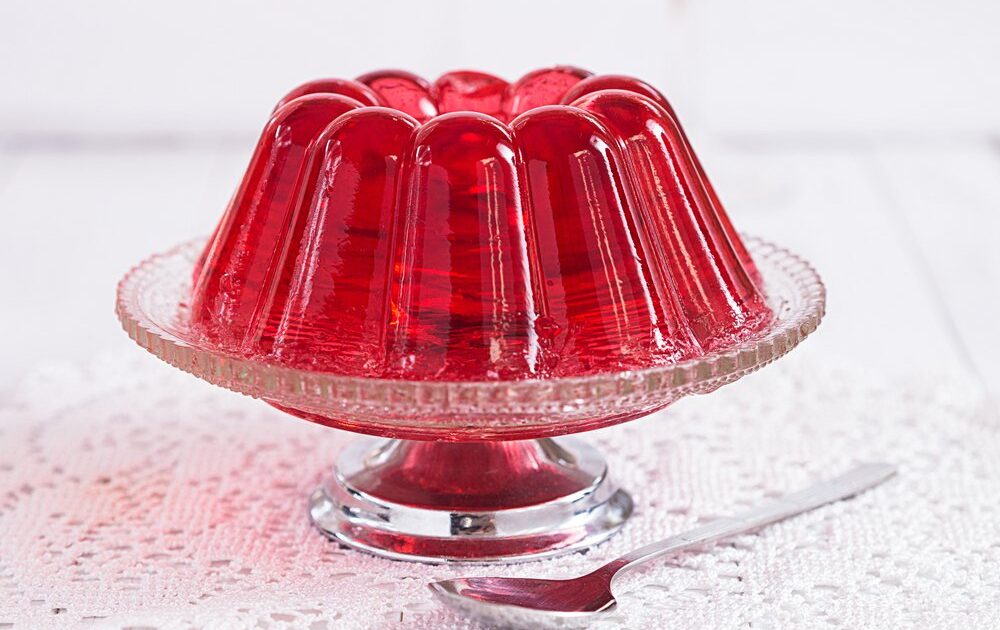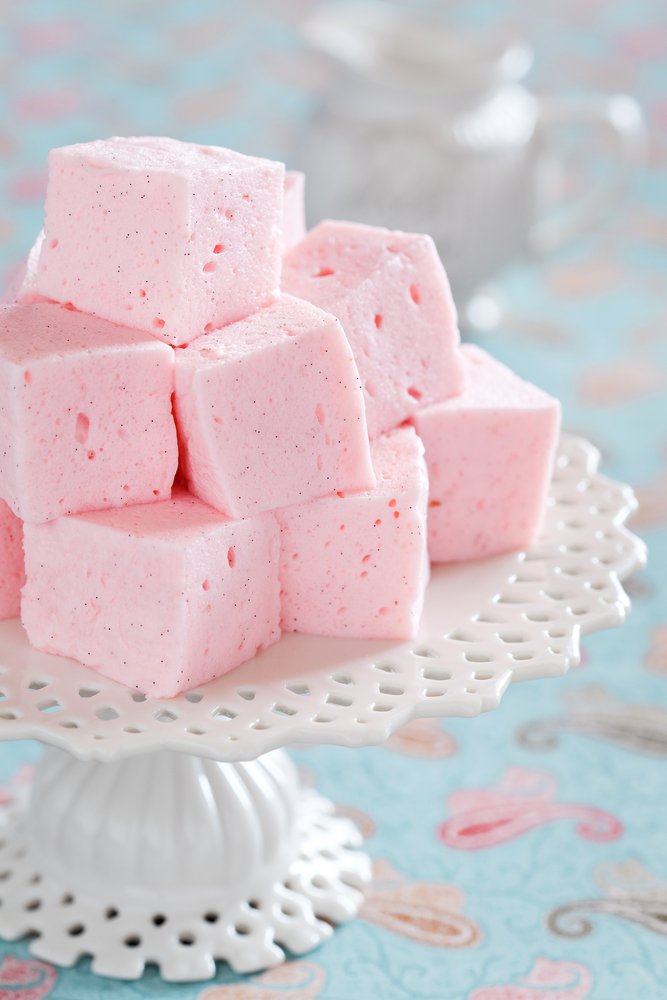Do You Know What Gelatin is Made Of? (You May Want to Sit Down for This)

More than 400 million boxes of Jell-O are sold every year, yet no one seems to know what’s in the stuff. Where does gelatin actually come from? You may have heard nightmare stories of horse hooves and pig ears in gelatin, but what’s the truth?
Caution: you will get the gory details, and for those of you who want to enjoy your Jell-O jigglers, shots, and strawberry pretzel molds in naiveté, this might not be for you.
What is Gelatin?
Gelatin comes from collagen, the soft protein that connects skin, bones, muscles, and tendons. It’s the stuff that, for a not-so-small-fee, also gets pumped into faces to reduce wrinkles, puff up the lips, and basically give the skin the same bounce as, well, Jell-O. But where does the collagen that will eventually become gelatin actually come from? This is where it gets kinda gross.
Collagen is made from animal parts. But we’re not talking porterhouse steaks, here. Once more expensive and desirable parts of the animal have been removed, you’re left with ears, hides, bones, and skin. These discarded pig and cattle parts later become your Grandma’s bright green gelatin mold, or those Jell-O shooters you adored freshmen year of college, (or maybe right now, no judgements).
How is Gelatin Made?
Animal carcasses arrive at processing plants after they’ve gone to the slaughterhouse. Rotting parts are discarded and everything else is chopped up, washed, degreased, and roasted to further dry the pieces out. The animal pieces are then soaked in a strong acid solution for several days to release minerals and bacteria. The gelatin is extracted from the animal parts and flash-heated for sterilization purposes. It’s pressed into sheets, dyed, and packaged.
A Closer Look at Gelatin Nutrition
Gelatin does have reported health benefits; it contains protein as well as two beneficial amino acids: glycine and proline. These amino acids, found in parts of animals we rarely consume, are good for joint health as well as skin, hair, and nail growth. Glycine has anti-inflammatory qualities and it may also improve sleep ease and quality, according to Dr. Axe. You can buy natural, grass-fed gelatin that doesn’t contain any additives or colors. It’s a translucent powder that’s a quick substitute for bone broth. Now Foods Beef Gelatin Natural Powder and Zint Unflavored Gelatin Powder are good choices.
Foods with Gelatin
Gelatin is used in a host of foods including some you may not have suspected. If you’re trying to avoid it, make sure to read the ingredients label to ensure that the product doesn’t contain gelatin. Here are some food categories that may include gelatin:
- Marshmallows
- Frosted cereals
- Gelatin dessert (like Jell-O)
- Pudding
- Candies (especially gummy candies)
- Peanuts (coating)
- Yogurts
- Frosting
- Cream cheese
- Sour cream
- Nondairy creamers
- Cupcakes
- Throat lozenges
Gelatin Substitutes
If you love foods that contain gelatin and are now in a state of panic over eating pig ears, don’t fret because there are plant-based alternatives like agar-agar, pectin, konjac, and guar gum that work just as well. Really.
Agar agar is made from seaweed, and like gelatin, it contains lots of protein as well as a wide array of minerals. Pectin is an extract from apples that’s used as a thickening agent in jellies and jams. It’s natural and safe. Konjac is made from the stem of a plant grown in Asia. It’s mottled grey and firmer than most gelatin, but a good vegan substitute. Guar gum is another plant-based substitute made from the endosperm of guar beans. Wanna put your new know-how to use? Here’s how to make your own gelatin-free marshmallows.
Vegan Marshmallows
Image of marshmallows via Shutterstock
Makes 40

Ingredients
3/4 cup sugar
1 Tbsp. corn flour
1/4 cup palm sugar
1 1/2 cups water
2 tsp. vanilla extract
2 1/2 Tbsp. soy protein isolate
1/4 tsp. baking soda
1/4 tsp. tartaric acid
1/4 tsp. sea salt
1/8 tsp. guar gum
5 tsp. powdered agar agar
6 Tbsp cold water
Coconut, cocoa powder, or other delicious toppings
Directions
1. Spray a sheet pan with coconut oil and dust with tapioca flour.
2. Combine sugar, corn flour, and palm sugar in a medium bowl. Whisk in water over high heat, stirring until the mixture comes to a boil. Turn down the heat and cook over a rolling simmer for 15 minutes, stirring from time to time. Add in vanilla extract. At the same time, sift together your remaining dry ingredients (except agar agar) in a medium-sized bowl and add to sugar mixture.
3. With an electric mixer, add in agar agar a few tablespoons at a time. Beat until lukewarm and risen in volume (should take around 2 minutes) and then spread over your prepared sheet pan. Set to firm up in the fridge for about an hour.
4. Carefully turn out on a dusted cutting board using your knife to loosen the marshmallows from the sheet pan. Take your time and be gentle.Use a sharp knife to cut into squares, depending on how large you want the marshmallows to be. Coat with coconut or cocoa powder if you like.
5. Serve immediately.
Your kids will love this homemade and completely delicious take on vegan marshmallows. Eat up and lose the guilt with these tasty treats!
Recipe: Vegetarians in Paradise
What do you think? Are you grossed out or pleased now that you know the truth about gelatin? We want to know! Drop us a line via Twitter @OrganicAuthorit
Related on Organic Authority
‘Mallows Gone Gourmet: Make Your Own Organic, Chemical-Free Marshmallows
How (and Why!) to Tell if Your Beer and Wine are Vegan
The Difference Between Stock and Broth and How to Maximize Both
Image of gelatin via Shutterstock

